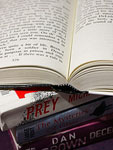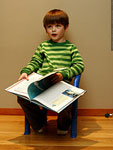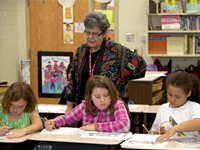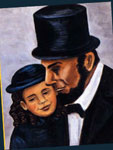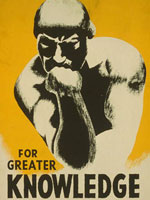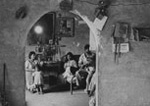Stereotypes in the Curriculum
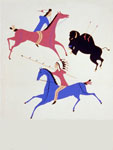
In his article “Popular Culture, Curriculum, and Historical Representation,” John Wills sought to examine the perpetuation of stereotypes in the American History curriculum by examining the treatment of Native Americans. Wills found that despite a variety of representations of Indians in the curriculum, teachers and students tended to emphasize a romanticized stereotype of Plains Indians. What did this indicate, he wondered, about the possibility of challenging narratives shaped by racial and ethnic stereotypes in American history?
Wills, a professor in the Graduate School of Education at the University of California, Riverside, spent an academic year in three 8th-grade classrooms exploring the interaction between cultural texts and their readers. He observed and videotaped 130 lessons at a predominantly white suburban middle school in San Diego County, transcribing teacher lectures, class discussions, and multimedia and student presentations.
What he found was that although these teachers were concerned with challenging stereotypical representations of Native Americans, they often struggled to move past overly simplistic portrayals. Refuting one stereotype of Natives as uncivilized savages, teachers perpetuated another: the romanticized image of Natives as buffalo-hunting nomads. So what did this indicate about American history and the portrayal of racial and ethnic minorities?
Natives and “the Story” of American History
As research by other scholars has revealed, American history classrooms are often characterized by a dominant narrative of perpetual progress. In this narrative, Americans of European descent drive history forward to produce expanded rights and opportunities, with the exception, as one teacher put it, of “a few black marks.” The consequence of this, Wills pointed out, was that racial and ethnic minorities remain largely incidental to the story being told. The exceptions are the stories of the enslavement of African Americans and the removal of Native Americans from conquered territory.
Wills showed that despite changes in textbooks, Native Americans were still confined to a small place in popular historical narratives. Natives only “fit” into the story during the period of westward expansion, when nomadic Plains Indians presented an obstacle to settlers. Because this was the established “place” of Native Americans in the popular story of American history, they were predominantly represented as nomadic, buffalo-hunting Plains Indians.
The addition of more racial and ethnic minorities, as well as women and members of the working class, to the story of American history provides students with more diverse images of particular groups. Wills argued, however, that as long as these images are framed by the dominant narrative of perpetual progress, students’ understandings will be limited and partial, compromised by stereotypes of these groups.
- Ask students to describe or depict a Native American from the past.
- Some students will focus on Plains Indians, emphasizing aspects of nomadic life like the construction of teepees and the hunting of buffalo.
- Ask students where those images come from. Popular media? Textbooks? This kind of discussion can help show students the relationship between popular historical narratives and the more complex realities of the past.
- Take a look, either during a unit, or over the course of the year, at how different tribes of Indians lived at different points in history and in different regions. Who were the Indians encountered by the Puritans? How did the Five Civilized tribes get the moniker "civilized"? What are some issues facing particular tribes today?
One of the teachers in Wills’s study opened the year with a lesson on early contacts between Europeans and Native Americans. Using the textbook A More Perfect Union she encouraged the students to consider what life was like for Indians living on land that would later be colonized:
“Not all Indians were nomadic. They didn’t all travel around and follow buffalo herds. Some of them farmed. And they needed land to farm on.”
After this unit, the class did not talk about Native Americans again for several months, until they moved on to the exploration of the West and the concept of Manifest Destiny. Encouraging students to consider the perspective of those who removed Natives from the land, the teacher referred to John Winthrop’s claim that in order to have a right to land it had to be farmed, mined, or changed in some way. She then followed up with a question that, for at least one student, seemed to draw on their earlier lesson:
Teacher: “Okay. Now, that’s a real important point because did the Indians farm, mine or, build very often?”
Student: “Farmed.”
Teacher: “They farmed, some did farm, some were farmers. But they would were farmers and…Well, that’s real funny ‘cause some of those…Okay…Most of them did not, farm, most of them traveled around. And so, one of the reasons that, the people who were moving west—though it seems very racist—but at the time, they had this idea in their head that: “Hey, if they haven’t improved the land, then it’s not really their land.” So it wasn’t like they went in and they uprooted these guys’ houses and stuff…”
Having painted herself into a corner, the teacher struggled to reconcile what she had taught the students earlier in the course—that not all Natives were nomadic buffalo hunters—with the dominant image that “fit” into the traditional story of American history. Indian removal is a tougher, more complicated topic when Natives are represented as farmers rather than nomads. Such a representation, however, is not only more historically accurate, but also challenges students to think in more complex ways about American history.
These two Ask a Master Teacher posts deal directly with the issue of incorporating Native American history into the normal curriculum:
Also check out these posts in the Ask a Historian field for specific information on Native Americans:
- Iroquois and the Founding Fathers
- Native American Customs of Childbirth
- American Indian Women
- Which Native American Tribes Allied Themselves with the French?
In addition, the National Museum of the American Indian by the Smithsonian Institution is an excellent resource for in-depth information on Native American history.
Wills, John S. “Popular Culture, Curriculum, and Historical Representation: The Situation of Native Americans in American History and the Perpetuation of Stereotypes.” Journal of Narrative and Life History (1994): 277294.
